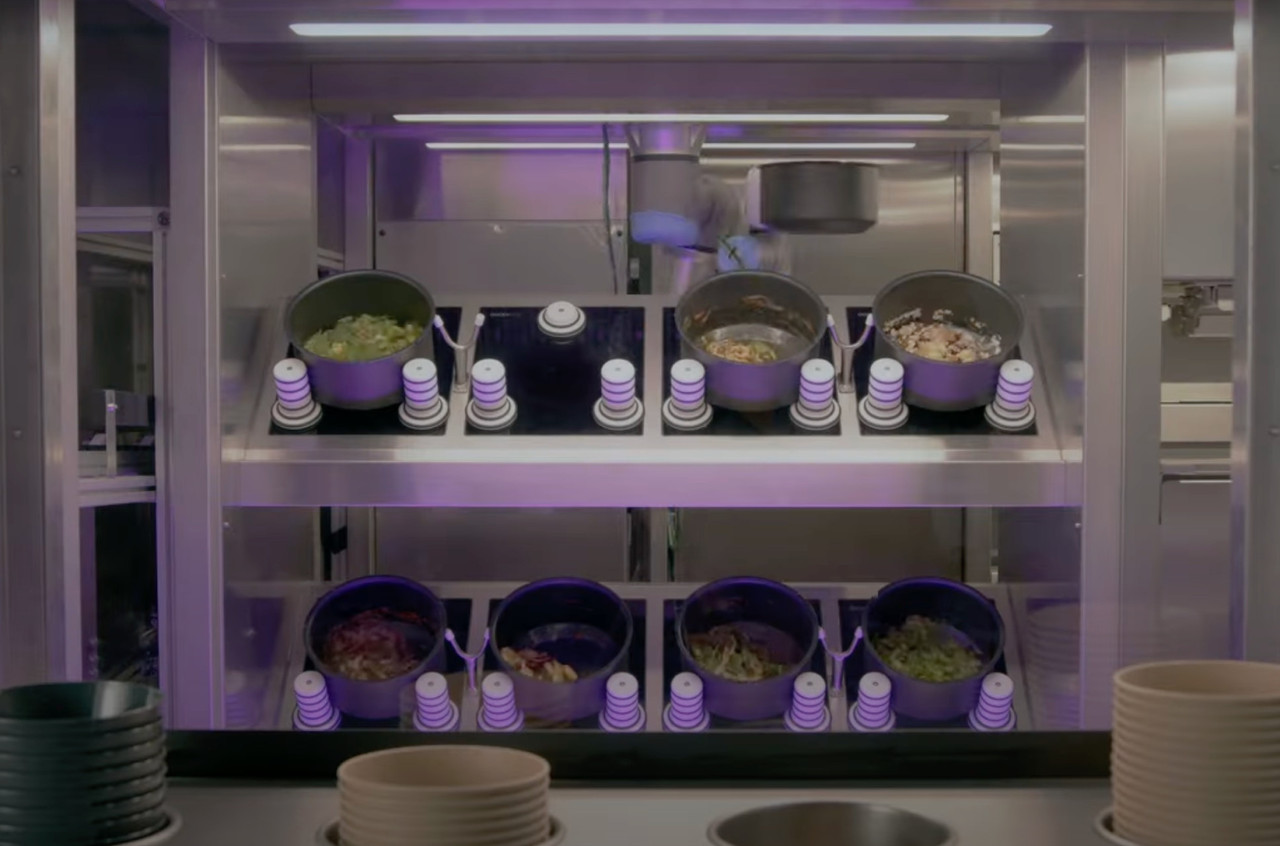Robots are used for a wide range of tasks in the food industry. They can be found in the fields planting, weeding, harvesting or scarifying, and then in tasks linked to sorting, packaging, palletising, as well as in order picking and quality control. Equipped with artificial intelligence and artificial vision systems, they are even capable of carrying out delicate tasks requiring great precision, such as decorating cakes for the patisserie.
At the Nexus2050 trade fair dedicated to new technologies, Goodbytz presented an innovative system for preparing ready-made meals using an automated system and a robotic arm. “We set up our company in Germany two years ago, at a time when the catering and hotel sectors were feeling the full impact of the covid crisis and difficulties in recruiting staff,” explains Kevin Deutmarg, co-founder of Goodbytz. “We were also aware of the new trends in healthy eating, mainly based on plant-based ingredients, and of consumers’ desire for greater flexibility in mealtimes. But these trends were out of step with the food industry and restaurant offerings. That’s why we invented a system that takes the pressure off chefs, which can be activated 24 hours a day, on demand, while still producing high-quality food.”
Complete production unit
Goodbytz is developing an intelligent, complete system that combines several automated tasks in a single production unit, from assembling ingredients to cooking, packaging and even cleaning utensils.
“Chefs enter their recipes into our system, specifying ingredients, quantities and cooking levels, and the production unit does the rest,” explains Deutmarg.
Different configurations are possible to meet a variety of needs: a station for cooking pasta, salads or Asian dishes... Many recipes are possible, including breakfast dishes.
“A crucial stage for us was the full-scale test with the creation of a ‘ghost kitchen.’ We invented a restaurant brand that offered delivery. At no point did we specify that the dishes were prepared by a robot. And after just a few months in operation, we made it into the top 15% of restaurants rated by consumers in Germany. And over 35% of our customers ordered from us at least once a week.”
This full-scale test enabled them to make improvements before launching their product on the market. “The restaurant gave us the opportunity to experience the flow of a restaurant kitchen for real, and so to optimise the system.” For example, they improved the cleaning stage--which used to take four hours and can now be done in one hour--by putting most of the elements in the dishwasher.
A variety of applications
The production unit can also be used as a complementary aid to a real chef. “At an event, for example, a chef can do live cooking for the grills, while the side dishes are prepared by the robot. With our system, the pace is four times more productive than if the same dishes were prepared by two chefs.”
Other applications are also possible: in hotels, which can offer their guests fresh food at any time; in hospitals, where doctors on call can also eat healthily regardless of cafeteria opening times; and in airports. The production unit can also be adapted for collective catering, such as in schools, for example. A 12.75m2 unit can produce 150 meals per hour.
The dishes can also be customised, as customers can use the ordering interface to choose to remove any ingredient, decide on the amount of salt they want or the size of their portion. They can also be informed of the carbon footprint of their dish or the nutritional value of what they order.
Six robots are already in service, including one with Sodexo in France and at a large loading station in Wertheim, Germany. Twenty are under construction this year, and Goodbytz’s ambition is also to distribute its system on continents other than Europe to test it against other culinary traditions and techniques.
This article was first published in French on . It has been translated and edited for Delano.
